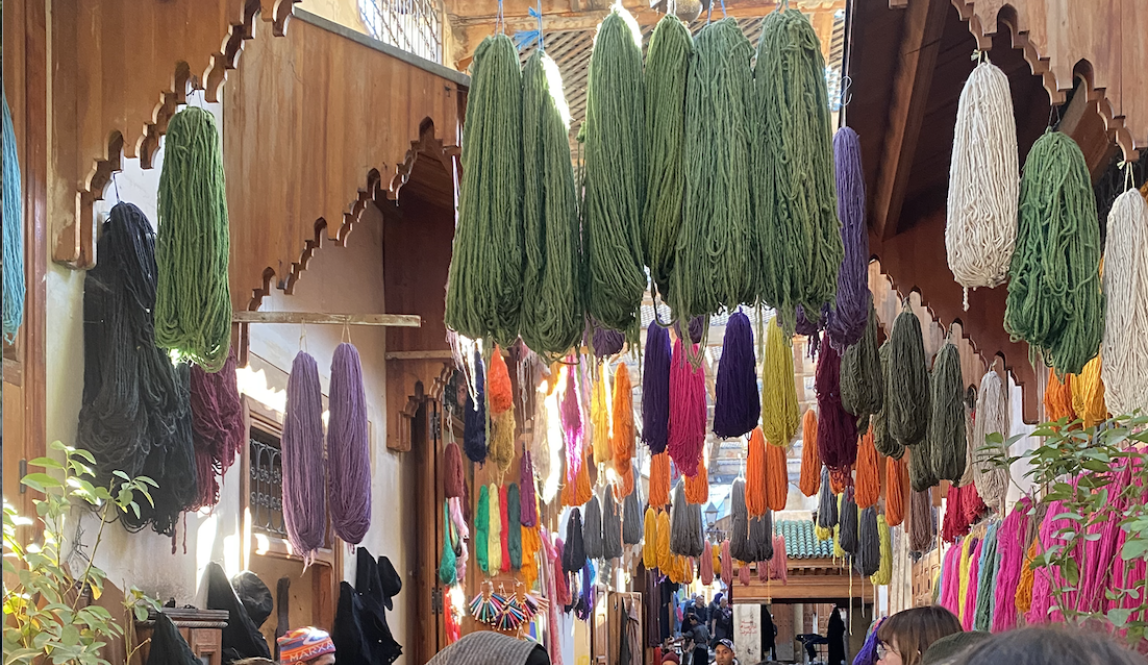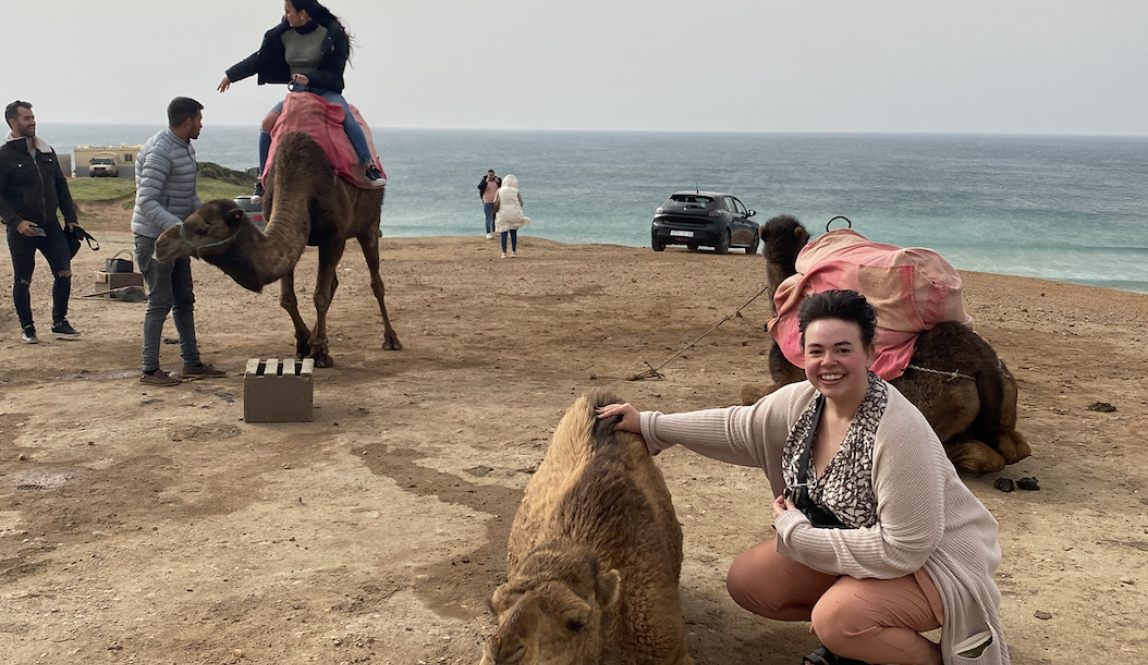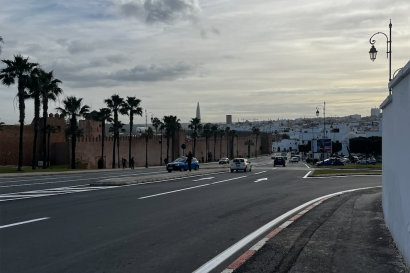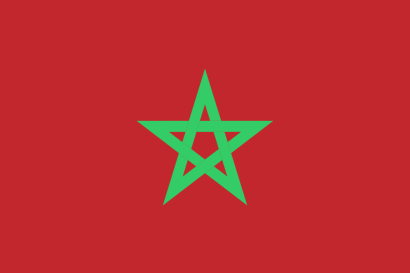Three weeks into my semester in Morocco and I’ve already traveled to six Moroccan cities. It’s easy enough to travel around the country, and each city has so much diverse history and culture, it’s impossible to not want to. So here’s your all-inclusive guide to traveling around Morocco: where you should, how you should, and what you should.
How To:
Travel: Train travel is the best way to go, no way around it. The trains are clean, cheap, and easy to navigate. Rabat, Casablanca, and Tangier all have large (and even multiple) train stations as well as the bullet train, which makes travel quick and flexible. If you’re looking to get somewhere slightly more rural, consider taking a Grand Taxi. When I traveled to Ifrane, I took a Grand Taxi the hour there from Meknes with a group of friends. It costs 500 dirham (50 USD) for the taxi to take up to six people to Ifrane, wait there for several hours while we explore, then drive us back once it gets dark. Of course, there are a few cities that are a little harder to travel to (which is the reason why I haven’t yet) mainly because of distance. Marrakesh is four hours by train whereas Agadir is eight. There is of course a flight down to Agadir, if you’re willing to pay it.
Lodging: Lodging-wise, Airbnbs are incredibly cheap and slightly less lenient on the laws that men and women can’t share lodging, in case you want to travel with a mixed-gender group. Hostels are a good option as well, though typically separated by gender. Well-located hotels, such as those in the medina, can also be a great option, but I would avoid ones in more touristy areas. If you’re unmarried and staying with someone of the opposite gender in a hotel, know they will likely ask to see your marriage license.
City Mobility: Around the city, the best thing to do is to make sure you’re well located. In most cases, I’d recommend finding a place to stay within the old Medina, especially if you’re staying in Meknes, Tangier or Fes. In Casablanca and Rabat, you can get away with staying in one of the trendy neighborhoods instead, such as Habous or Agdal. This will make it so that walking can be your main way of getting around. If you end up staying far away from where you want to be, a petit taxi is another great way to get around, just make sure the driver turns on the meter, or agree on a price beforehand. Most times, a ride won’t be more than ten dirhams, or a dollar.
Bests and Worsts:
Each city has a uniqueness to it that is hard to recreate, but through my travels I’ve started to notice which cities should be known for what.
Medinas: For those who haven’t visited Morocco, Medinas are typically the old part of the city, full of narrow streets, markets, and hidden gems. The two best Medinas I visited by far were Fes and Tangier. They were both beautiful, and different in their own ways. Fes was a bustling, classic Medina, and the oldest Medina in Morocco (though Marrakesh is the largest). The perfect place to go shopping, I passed shops that were hand-weaving scarves, hand-shaping brass bowls, and hand-engraving teapots. The tanneries, of course, were a must-see, the large holes of dyes and drying hides like something out of a tour book. Tangier was less interesting shop-wise, but far more beautiful, the seafaring city at the cusp of where the Atlantic meets the Mediterranean. Incredible cobblestones, breathtaking views, and a Kasbah equipped with ancient cannons pointed at Spain. Honorable mentions to the old Medina in Meknes, which felt like a smaller Fes, and in Rabat, which is where I am currently living.
Seasonal: Certain cities are better to visit at certain times of the year. Ifrane, for example, is known for its snowy mountainscape and ski resort. Going there during the winter is definitely the best time to get to the heart of what Ifrane has to offer. Conversely, Tangier is a summer city at its core. Going during February as I did was a disservice to the potential swimming and beachside lounging I could have experienced.
Nightlife: Tangier, with its proximity to Spain, is known for its wild nightlife, but again, seasonality is everything. As a Muslim country, most locals do not participate in nightlife, so tourists are the majority of those going out, especially in touristy cities, so going during the off-season leads to a less-than-ideal experience. In general, though, most big cities you visit in Morocco will not have a prominent nightlife.
Nature: A lot of the big cities you go to are known for their bustling markets more than their natural beauty, but that doesn’t mean it doesn’t exist. Ifrane, for one, situated high in the Atlas Mountains, has incredible views as well as adorable parks fit with lakes to walk around. Getting out of the central part of Tangier can also lead to stunning oceanic beauty, with gorgeous beaches and natural rock forms, such as the Caves of Hercules.
Museums and Sites: Casablanca’s Hassan II Mosque was the most astonishing monument I’ve seen yet, this massive Mosque colliding with the sea like an ancient fortress detailed with care and art. Meknes’s Volubolis was another must-see, the ancient Roman ruins and mosaics transporting you back to a long-gone civilization. Meknes, Fes, and Rabat all have Royal Palaces that are interesting to see, and Rabat has the Tour Hassan, a half completed Mosque from the 12th century. Museum-wise, Casablanca’s Museum of Moroccan Judaism was an interesting experience, though it is a bit outside of the city. Tangier has the Kasbah Museum and the Museum of American Legation, if you’re interested in America and Morocco’s diplomatic relationship. Rabat also has the Museum of Contemporary Art, which I haven’t yet visited, but heard is wonderful.
Bucket List:
I’m only ¼ of the way through my program, and there’s still a lot more traveling I want to do throughout Morocco.
Marrakesh: I know, this is the big one I’m missing. There are two main reasons I haven’t traveled there yet. One, Marrakesh is pretty far from Rabat, where I’m living, and since I can only travel on the weekends, this can be difficult. Two, several of the local Moroccans I’ve spoken with say it’s very touristy. This has made me want to prioritize visiting other cities that would be more difficult to go to if I wasn’t living in Morocco. Still, Marrakesh remains on my list, and I hope to travel there when I next have a chance.
Chefchaouen: Speaking of nature, nowhere has come higher recommendations for its hikes and natural beauty than the blue city, an hour out from Tangier. This is another city that would be somewhat difficult to get to, but there are buses from both Tangier and Rabat, and from what I’ve heard, it’s definitely worth it.
Essaouira: Jimmy Hendrix visited Essaouira in the 60s and the city decided to adopt that as its entire personality. A port city known for its turquoise waters and hippie vibe, this is the perfect destination for windsurfing, kitesurfing, or just regular surfing.
Agadir: Anyone a fan of crocodiles? Tropical Agadir is known for its beachy waves and resorts. I’m planning to head there whenever I’m in need of some deep relaxation.
Wherever you go, have a good time, and eat as much Tagine as humanly possible. Good luck!


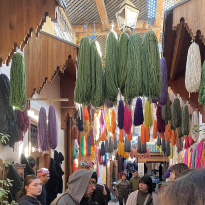






Zoe Carver
Zoe Carver is a second-year student of International Affairs and Peace Studies at the George Washington University, minoring in French and Creative Writing. She is originally from Portland, Oregon and is apart of GW's Literary Magazine, Model UN team, and Student Climate Coalition. She just finished a positon interning in the United States Senate, and has a deep love for crocheting.


